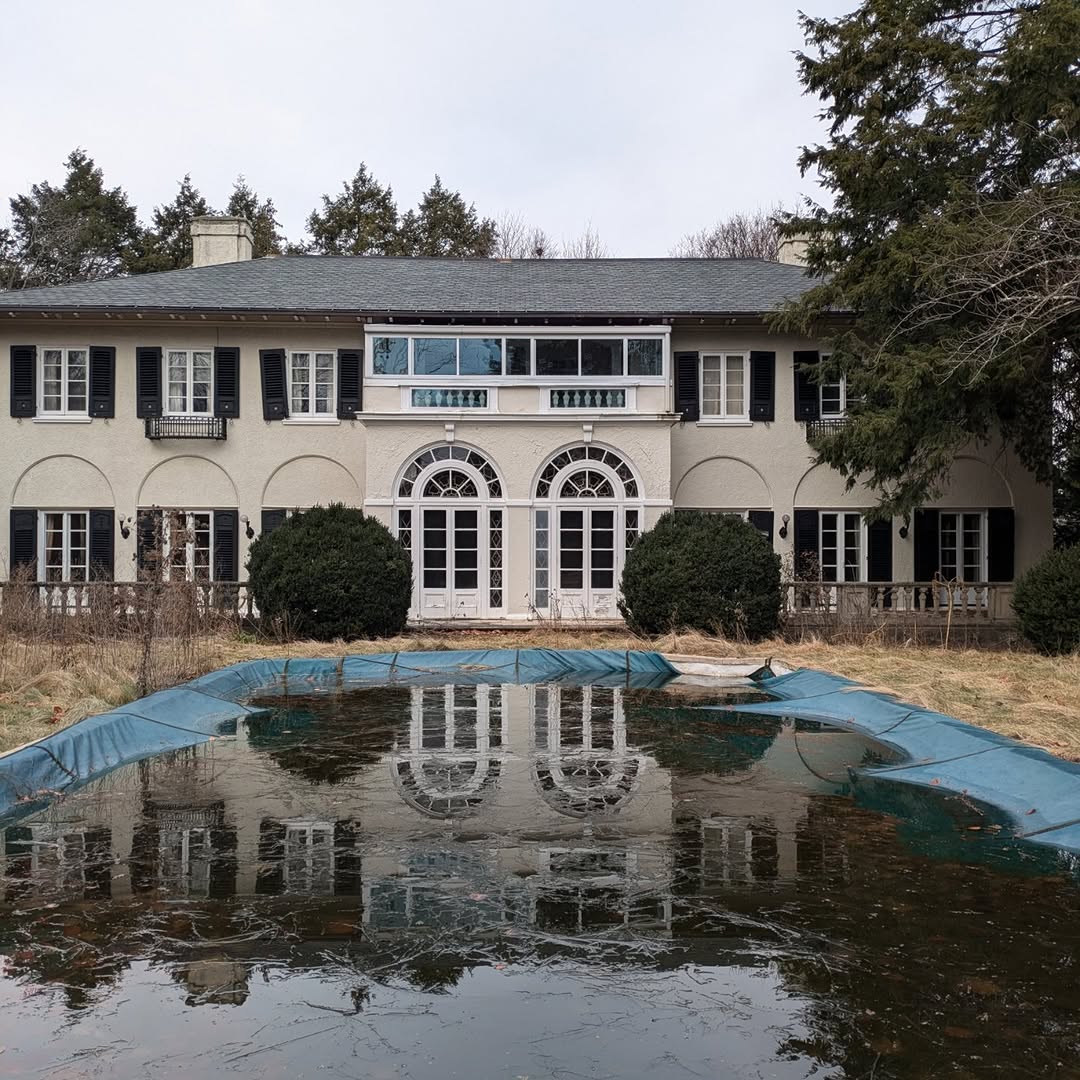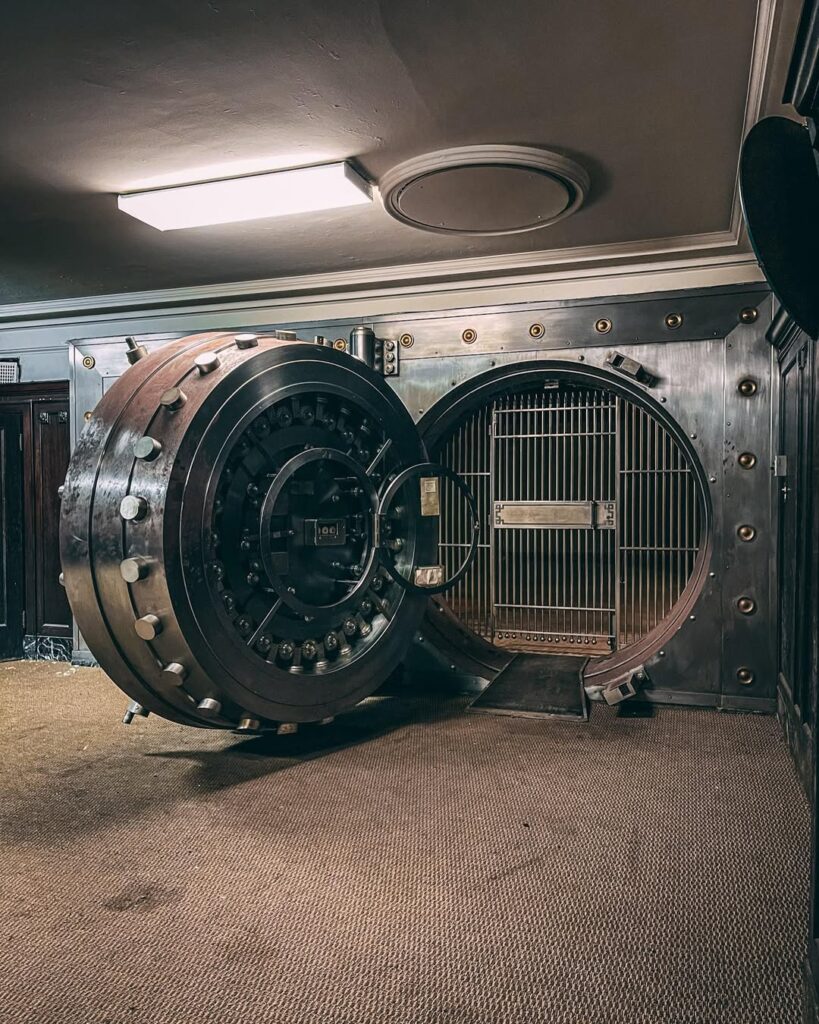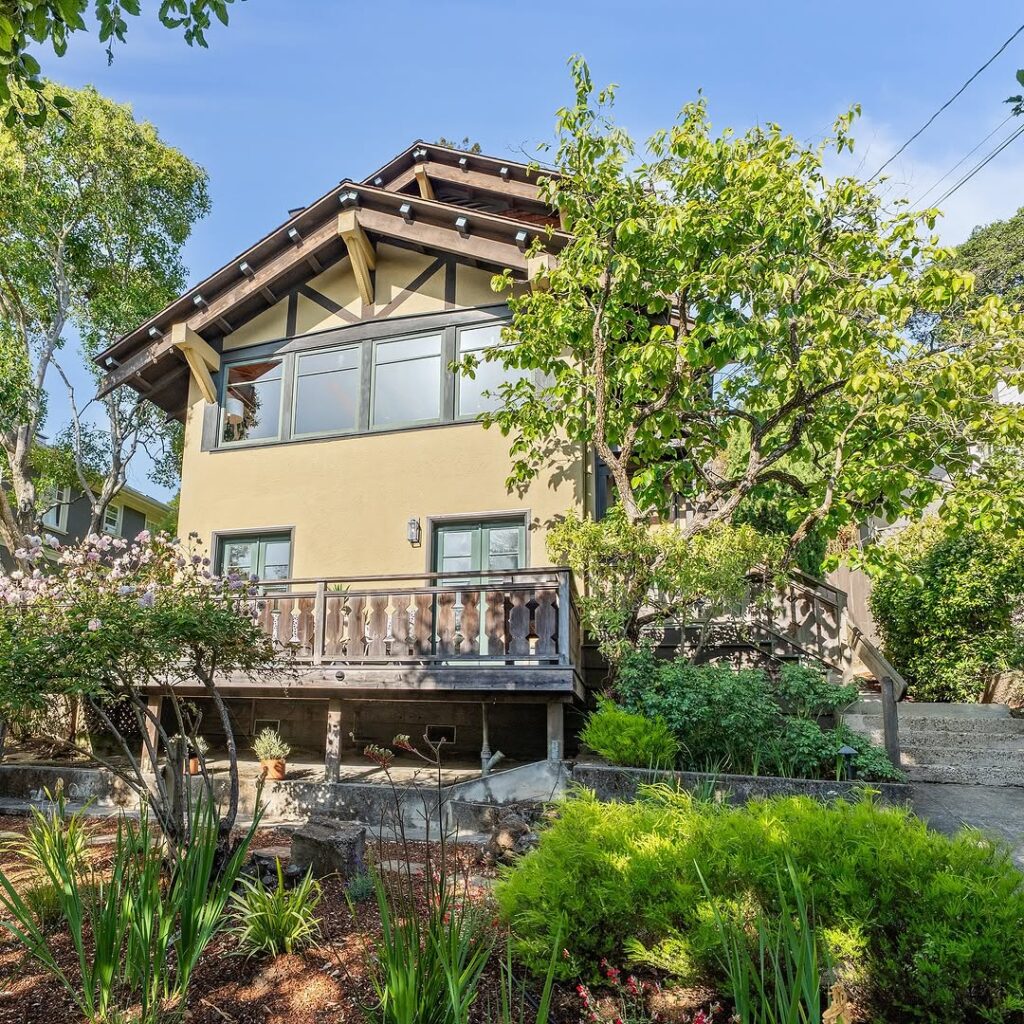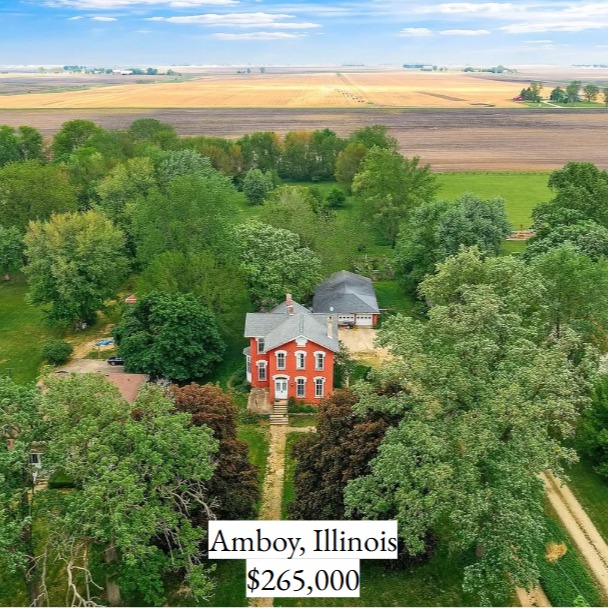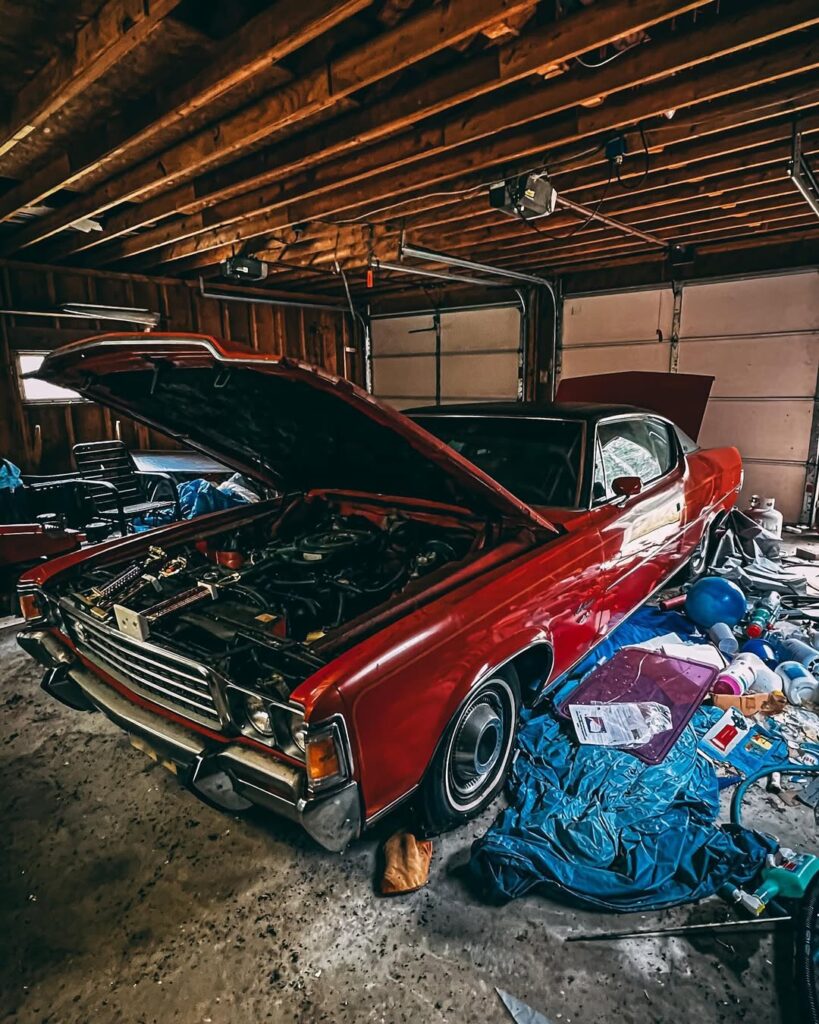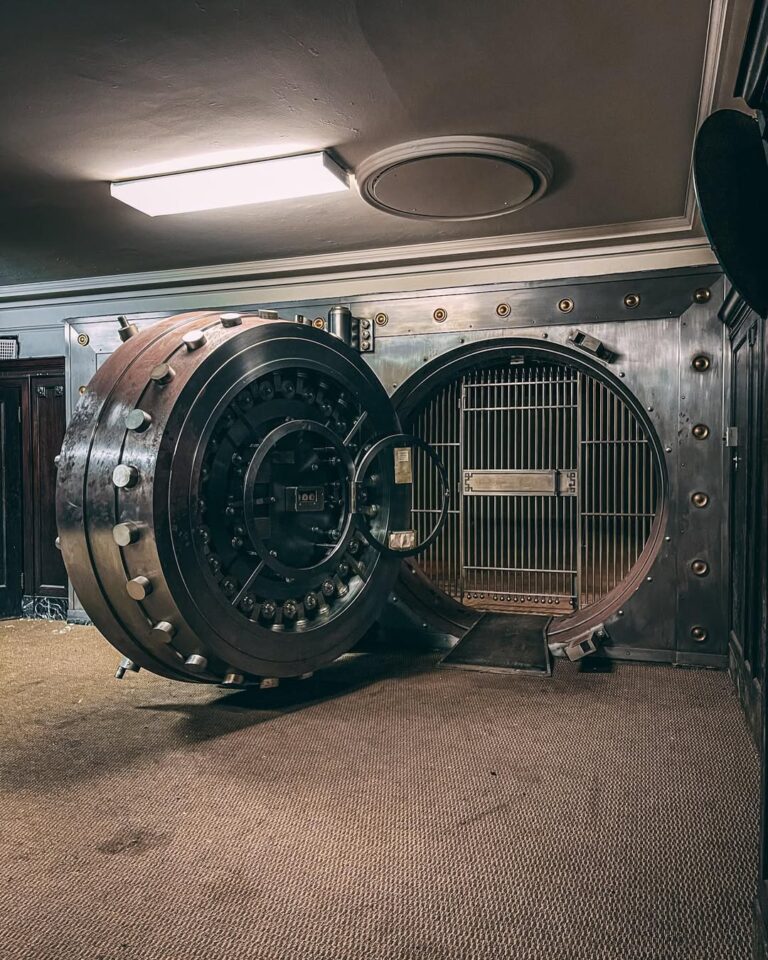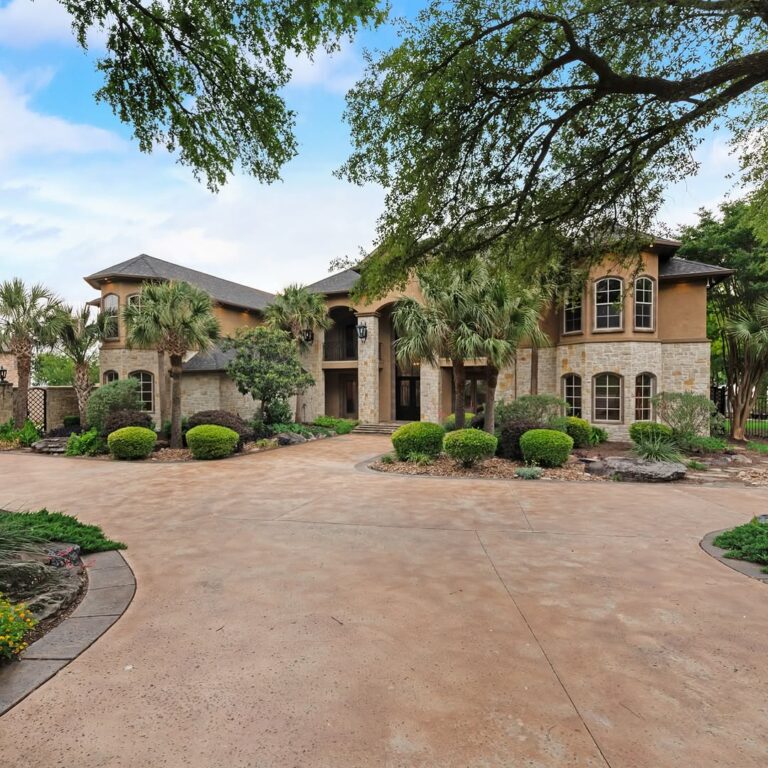Hidden deep within the tree-lined streets of Brookline, Massachusetts—the birthplace of President John F. Kennedy—stands a magnificent testament to America’s Gilded Age that few will ever see. This 9,000-square-foot abandoned mansion, valued at $7.5 million, represents more than just architectural grandeur; it embodies a poignant story of family legacy, personal sacrifice, and the inexorable passage of time.
Built in 1900 by one of Massachusetts’ most influential political families, this forgotten masterpiece has remained untouched since 2020, when its final occupant, Peggy, passed away. Her story, and that of her family’s estate, offers a rare glimpse into how America’s elite once lived—and how even the most powerful legacies can fade into obscurity.
H1: The Historic Neighborhood That Shaped Presidents
H2: JFK’s Hometown Legacy
Brookline, Massachusetts, holds a unique place in American history as the childhood home of the 35th President of the United States. This affluent suburb, located just outside Boston, has long been a haven for the wealthy and politically connected. The tree-lined streets and grand estates that characterize the area have witnessed over a century of American history unfold within their boundaries.
The neighborhood where this abandoned mansion sits represents one of the most exclusive enclaves in the United States. Property values here regularly exceed millions of dollars, and the area boasts some of the finest examples of turn-of-the-century architecture in New England. It’s a place where old money meets political influence, where families have maintained their estates for generations, and where privacy and discretion are valued above all else.
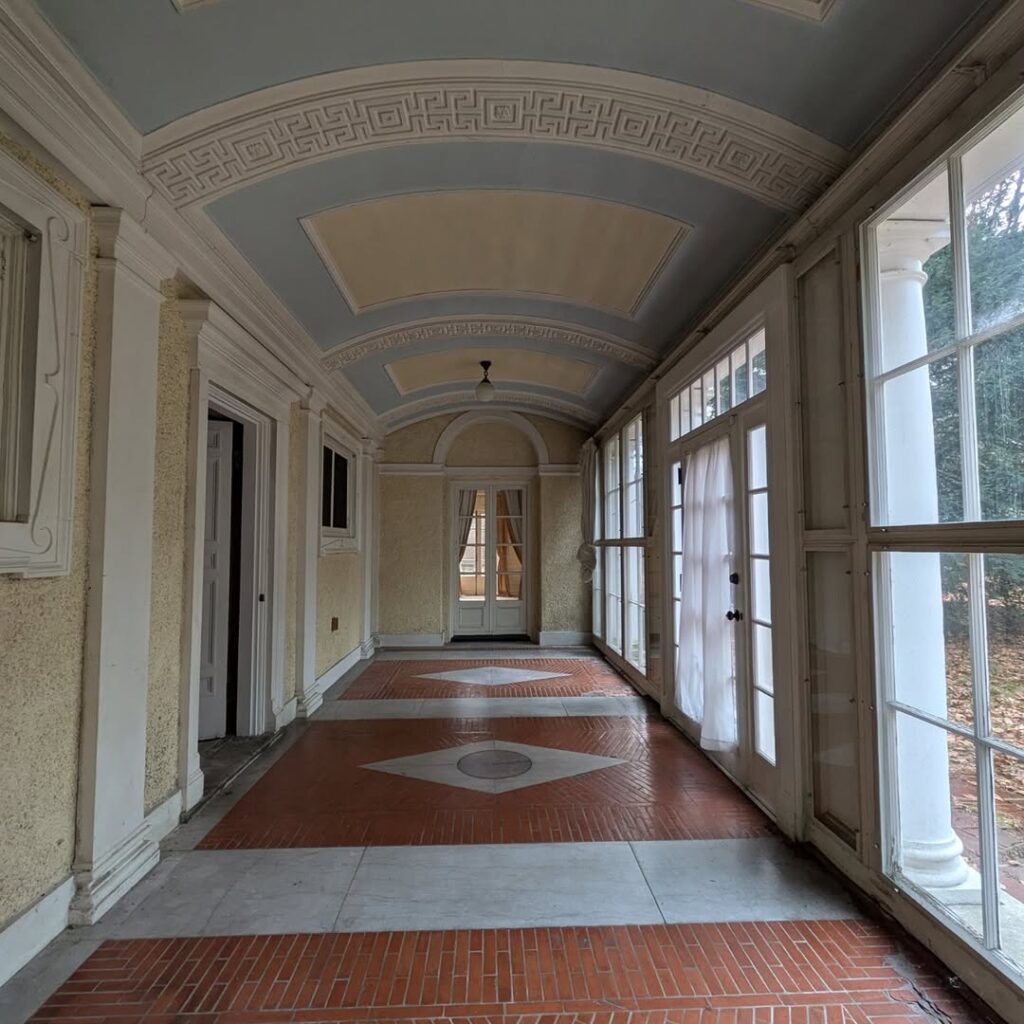
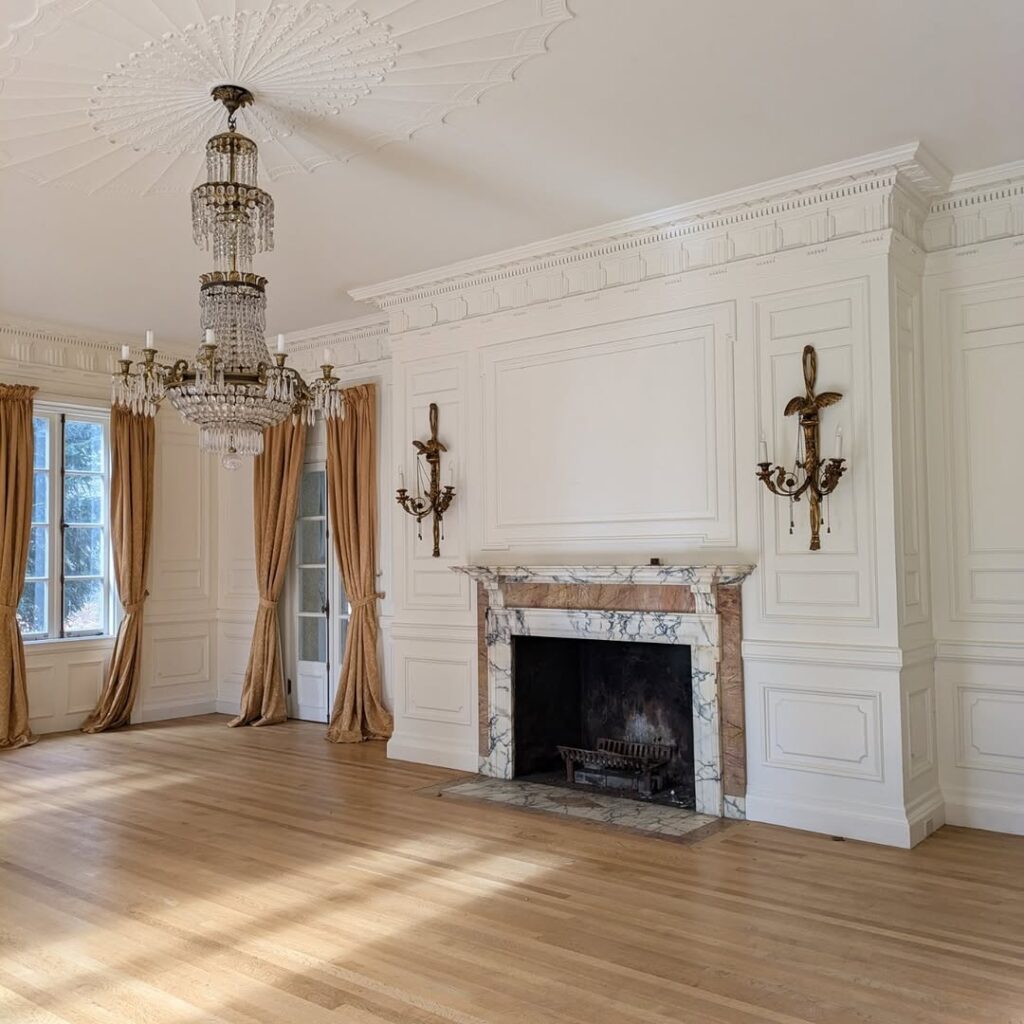
H2: The Gilded Age Architecture
The mansion itself stands as a remarkable example of early 20th-century American architecture. Built during the height of the Gilded Age, when wealthy families competed to construct ever more elaborate homes, this 9,000-square-foot estate showcases the craftsmanship and attention to detail that defined the era.
The exterior features the classic elements of Colonial Revival architecture, with its symmetrical facade, prominent columns, and detailed cornices. Large windows flood the interior with natural light, while the wraparound porch speaks to a time when outdoor entertaining was an essential part of social life among the elite. The mansion’s positioning on its expansive lot was carefully planned to maximize both privacy and views of the surrounding landscape.
H1: The Political Family Behind the Mansion
H2: A Dynasty of Influence
The family that commissioned this grand estate in 1900 was no ordinary clan. They were deeply embedded in Massachusetts politics, wielding influence that extended from the state capitol to Washington, D.C. Like many wealthy families of the era, they understood that impressive architecture served as both a symbol of their success and a tool for maintaining their social and political connections.
The patriarch of the family made his fortune in the booming industries of the late 19th century, parlaying business success into political influence. The mansion served as more than just a residence; it was a gathering place for politicians, business leaders, and social elite. The grand entertaining spaces, including a formal dining room that could seat dozens and a ballroom that hosted some of the most important social events of the era, were designed specifically for this purpose.
H2: The Seat of Power and Influence
Throughout the early decades of the 20th century, this mansion witnessed countless political meetings, social gatherings, and family celebrations. The library, with its floor-to-ceiling bookshelves and leather-bound volumes, served as an informal office where deals were struck and alliances formed. The smoking room, complete with its original humidor and crystal decanters, was where the real business of politics often took place.
The family’s influence extended beyond mere wealth. They were instrumental in shaping local and state politics, supporting candidates and causes that aligned with their vision for Massachusetts and the nation. Their connections reached into the highest levels of government, and their opinions carried weight in both Democratic and Republican circles.
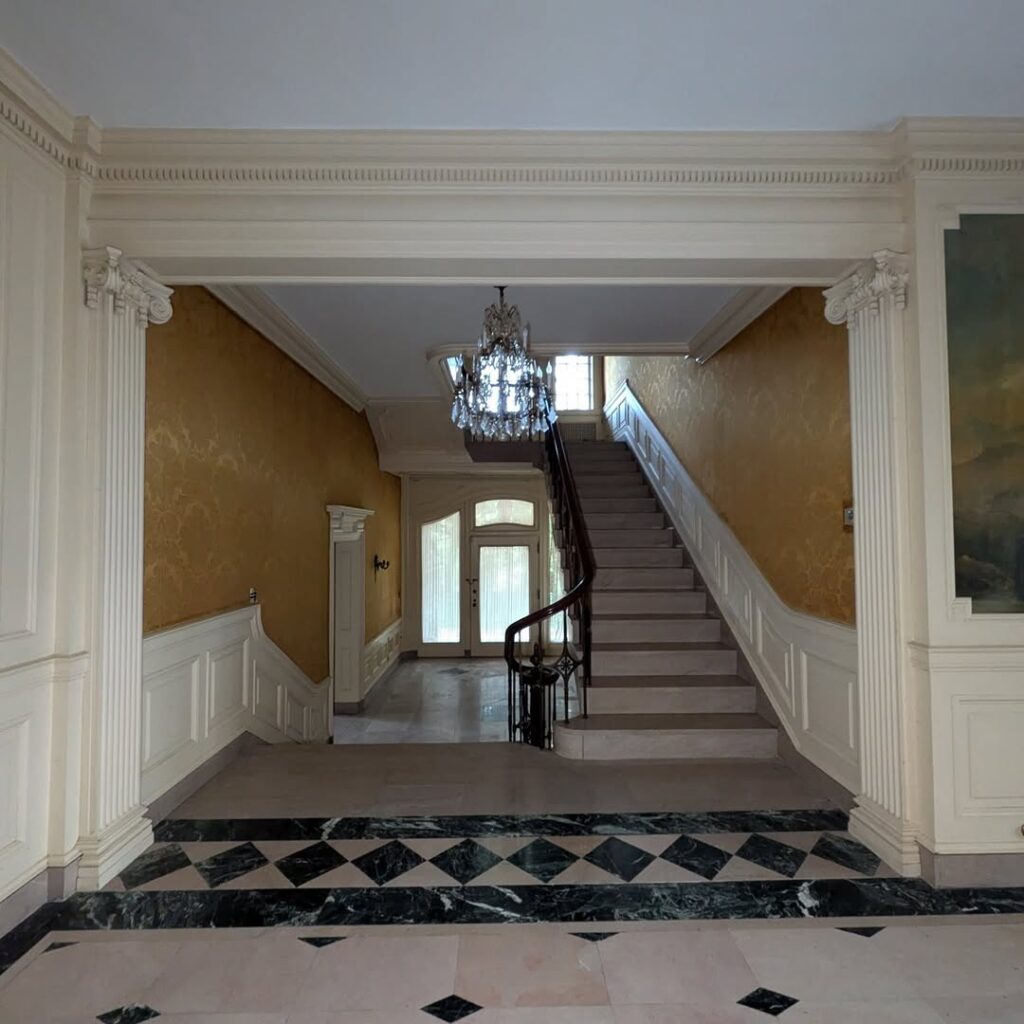
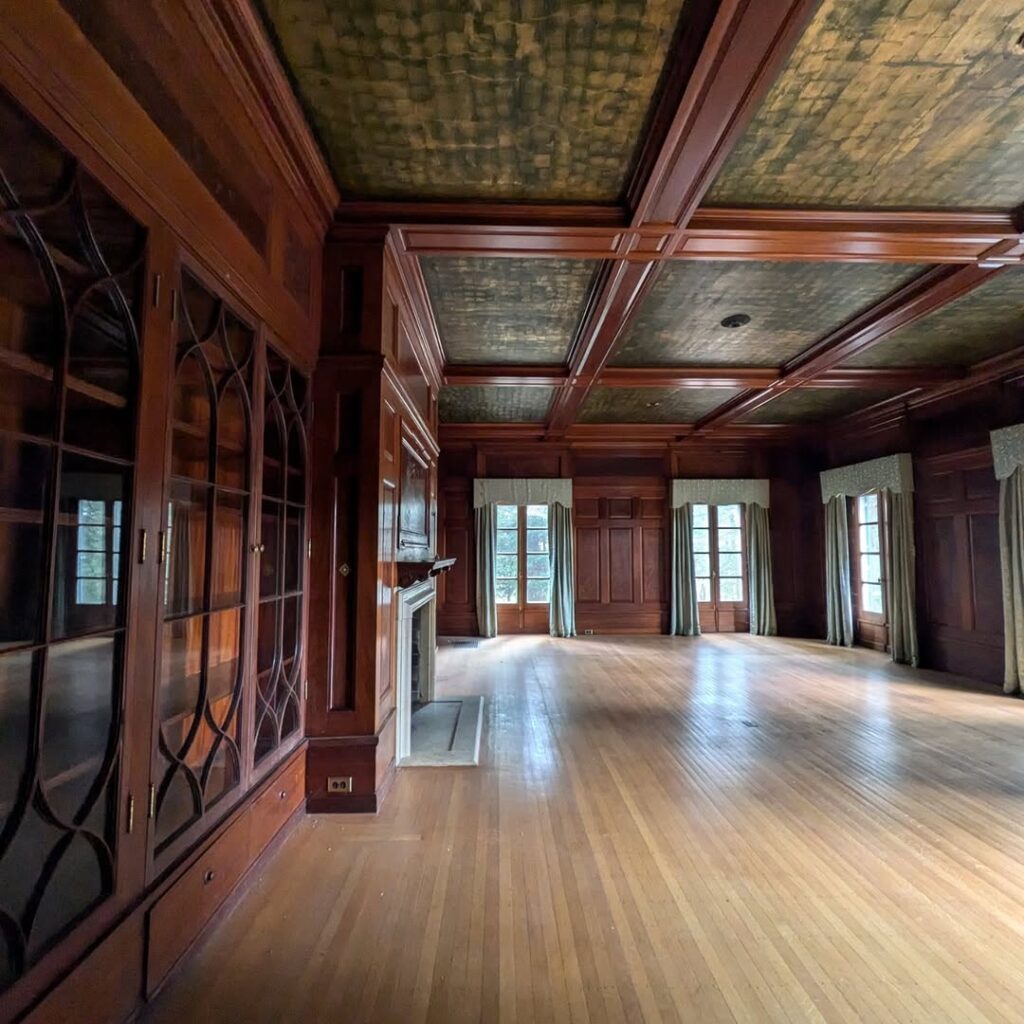
H1: Peggy’s Story: A Life of Purpose Over Power
H2: The Daughter Who Chose Differently
Among the family’s children, Peggy stood apart. While her siblings embraced the world of politics and high society, she chose a different path—one that would ultimately define her legacy and the fate of the family mansion. Born into privilege, Peggy could have easily lived a life of leisure and social prominence. Instead, she dedicated herself to causes that mattered to her personally, often working behind the scenes to support charitable organizations and social causes.
Peggy’s quiet nature and preference for privacy made her something of an enigma, even within her own social circle. She was known for her kindness, her sharp intelligence, and her unwavering commitment to helping others. While her family entertained politicians and business leaders in the mansion’s grand rooms, Peggy often preferred the quiet solitude of the library or the peaceful gardens that surrounded the property.
H2: A Legacy of Compassion
As the years passed and other family members moved away or passed on, Peggy became the mansion’s sole guardian. She maintained the property with meticulous care, preserving not just the building itself but the memories and history it contained. Every room remained exactly as it had been during the family’s heyday, creating a time capsule that would later fascinate and intrigue those who discovered it.
Peggy’s charitable work continued throughout her life. She quietly supported numerous causes, from education and healthcare to environmental conservation. Her approach was always personal and hands-on; she preferred to work directly with organizations rather than simply writing checks. This dedication to service over spectacle became her defining characteristic and ultimately her greatest legacy.
H1: The Mansion’s Hidden Treasures
H2: Frozen in Time
Since Peggy’s passing in 2020, the mansion has remained exactly as she left it. Walking through its halls today is like stepping back in time, with each room telling a story of American history and family legacy. The formal dining room still features the original Waterford crystal chandelier and mahogany table that once hosted senators and governors. The morning room, with its delicate wallpaper and antique furnishings, speaks to a more genteel era of American life.
The mansion’s kitchen, while updated over the years, still retains much of its original character. The servants’ quarters, located on the third floor, provide insight into how wealthy families of the era lived and worked with their household staff. Even the basement, with its wine cellar and storage rooms, contains artifacts from the family’s long history.
H2: Architectural Details That Tell Stories
Every detail of the mansion’s construction speaks to the era’s emphasis on quality and permanence. The hardwood floors, crafted from ancient oak and chestnut, have survived over a century with minimal wear. The original plasterwork, featuring intricate moldings and decorative elements, showcases the skill of craftsmen who took pride in their work.
The mansion’s windows, many of which are original, are made from hand-blown glass that creates subtle distortions and rainbow effects when the light hits them just right. The original hardware, from door handles to light fixtures, was crafted from brass and iron by skilled metalworkers. These details, which might seem minor today, were considered essential elements of a truly fine home during the Gilded Age.
H1: The Neighborhood’s Exclusive Character
H2: Where Old Money Meets Modern Wealth
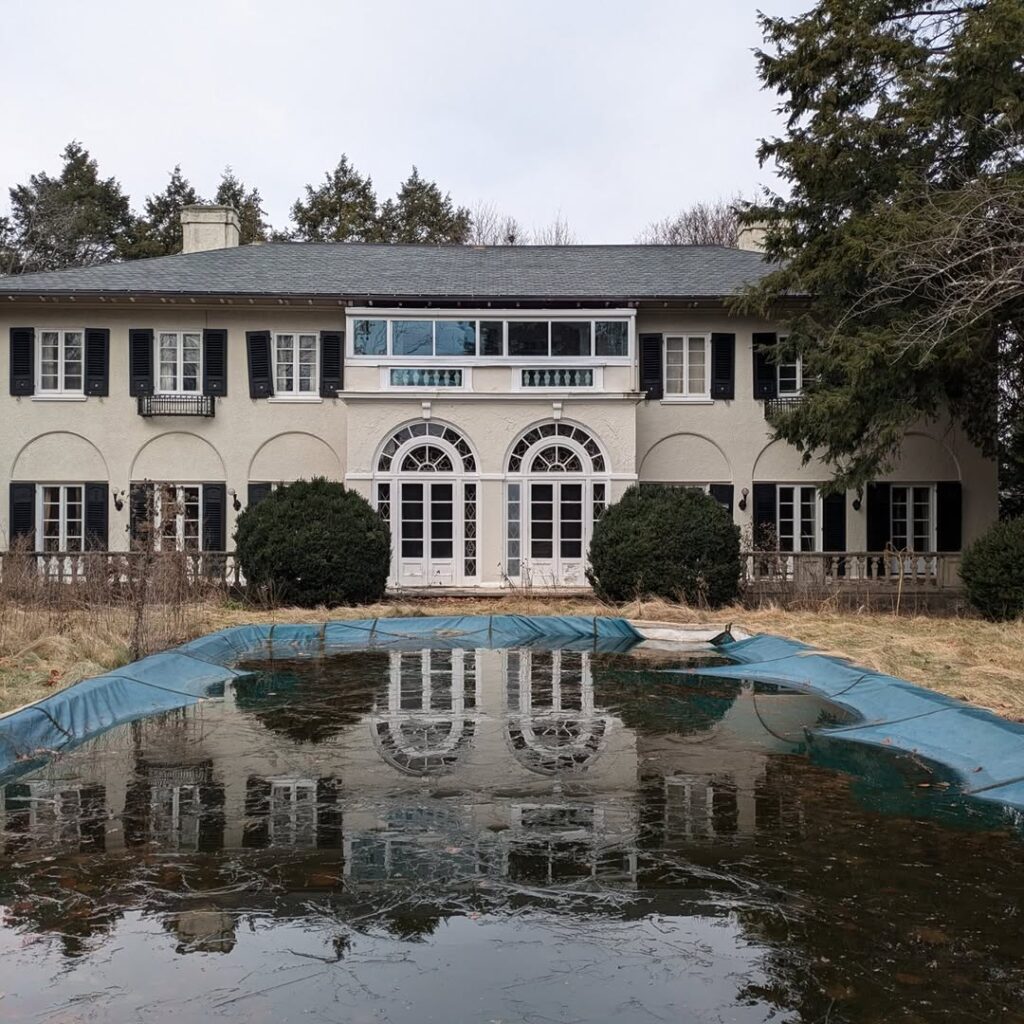
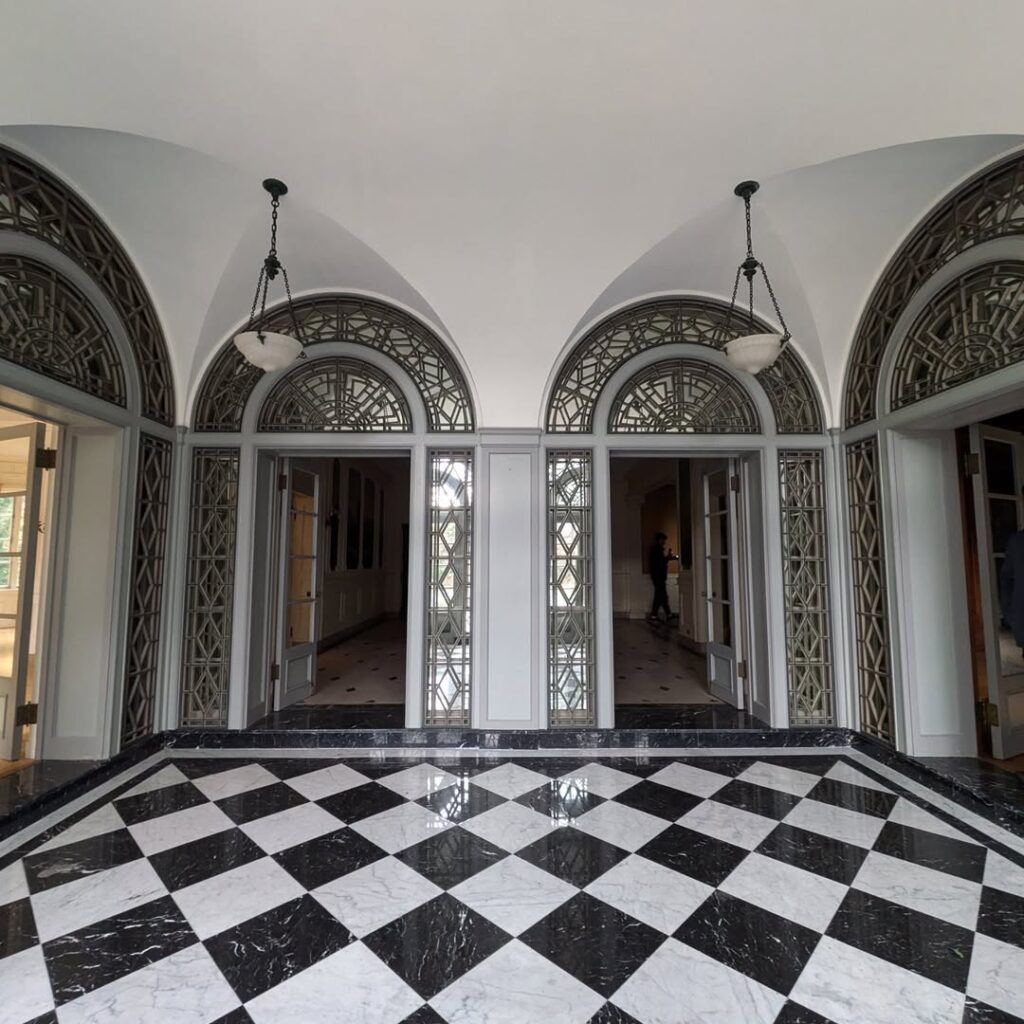
The neighborhood surrounding the abandoned mansion represents one of the most exclusive residential areas in the United States. Property values here have consistently ranked among the highest in Massachusetts, with many homes selling for well over $5 million. The area’s exclusivity is maintained not just by high prices but by a culture of privacy and discretion that has persisted for generations.
Many of the neighborhood’s residents are descendants of families who have lived here for decades or even centuries. Others are newly wealthy individuals who have been drawn to the area’s prestige and privacy. The common thread that unites them is an appreciation for the neighborhood’s unique character and a commitment to preserving its historic charm.
H2: The Challenge of Preservation
The abandoned mansion faces the same challenges that confront many historic properties in expensive neighborhoods. While the building itself remains structurally sound, the costs of maintaining such a large estate are enormous. Property taxes alone exceed $100,000 annually, and the specialized maintenance required for a home of this age and quality requires significant expertise and resources.
The neighborhood’s zoning laws and historic preservation requirements add another layer of complexity. Any changes to the property must be approved by multiple boards and committees, a process that can take years and cost hundreds of thousands of dollars. These regulations, while essential for preserving the area’s character, make it difficult for potential buyers to adapt historic properties to modern needs.
H1: The Race Against Time
H2: Nature’s Reclamation Project
Without regular maintenance, even the finest homes begin to deteriorate. The abandoned mansion is slowly showing signs of neglect, with ivy beginning to creep up its walls and small leaks developing in the roof. The gardens, once meticulously maintained, are gradually returning to their natural state. While this process has a certain romantic appeal, it also represents a race against time to preserve an important piece of American architectural history.
The mansion’s isolation works both for and against its preservation. While the property’s privacy has protected it from vandalism and unauthorized entry, it has also meant that deterioration has gone largely unnoticed by the outside world. The longer the property remains unoccupied, the more expensive its restoration becomes.
H2: The Uncertain Future
The future of the abandoned mansion remains uncertain. Estate proceedings can take years to complete, especially for properties of this value and complexity. During this time, the mansion continues to deteriorate, making its eventual restoration more challenging and expensive. The property’s size and unique character make it difficult to sell, as few buyers have both the resources and the desire to take on such an ambitious project.
Several scenarios could unfold. The property might be purchased by a wealthy family who appreciates its historic significance and is willing to invest in its restoration. Alternatively, it could be acquired by a developer who might subdivide the land, though local zoning laws would likely prevent such development. There’s also the possibility that the property could be donated to a historic preservation organization, though the ongoing costs of maintenance would remain a significant challenge.
H1: Lessons from a Forgotten Masterpiece
H2: The Impermanence of Legacy
The story of this abandoned mansion serves as a powerful reminder of the impermanence of even the most impressive human achievements. The family that built this grand estate wielded considerable political and social influence for decades, yet their legacy has largely faded from public memory. The mansion itself, once a symbol of permanence and power, now stands as testament to the inevitable passage of time.
Peggy’s story offers a different perspective on legacy. While her family’s political influence has waned, her quiet acts of kindness and dedication to helping others created a different kind of lasting impact. The organizations she supported continue their work, and the people she helped remember her compassion. Her legacy, while less visible than a grand mansion, may ultimately prove more enduring.
H2: The Value of Preservation
The abandoned mansion also highlights the importance of historic preservation. These grand estates represent irreplaceable examples of American architecture and craftsmanship. Once they’re gone, they cannot be recreated, regardless of how much money is spent on the attempt. The skills and techniques used to build them have largely been lost, and the materials they used are no longer available.
Beyond their architectural significance, these properties serve as tangible links to our past. They help us understand how previous generations lived, what they valued, and how they expressed their prosperity and status. The mansion’s rooms, with their original furnishings and decorations, provide insights into American life during the early 20th century that no textbook could convey.
H1: Conclusion: A Call to Remember
The abandoned mansion hidden in JFK’s hometown represents more than just an expensive piece of real estate left to decay. It embodies the dreams and aspirations of a family that helped shape American history, the quiet dignity of a woman who chose service over status, and the ongoing challenge of preserving our architectural heritage for future generations.
As we look toward the future, the fate of this forgotten masterpiece remains uncertain. Will it be restored to its former glory, serving as a reminder of America’s Gilded Age and the families who helped define it? Or will it slowly succumb to time and neglect, joining the countless other grand estates that have been lost to history?
The answer may depend on whether we, as a society, recognize the value of preserving these connections to our past. The mansion’s story is ultimately our story—a reflection of American ambition, achievement, and the complex legacies we leave behind. In saving places like this, we preserve not just buildings but the memories and lessons they contain.
Peggy’s legacy of quiet service and compassion offers perhaps the most important lesson of all. While grand mansions may crumble and political influence may fade, the impact of a life dedicated to helping others endures. In the end, the most lasting legacy may not be the impressive architecture or the political connections, but the simple human kindness that defined one woman’s remarkable life.
The mansion stands today as a monument not just to wealth and power, but to the choices we make about what matters most. As time continues its relentless march, the question remains: What kind of legacy will we choose to leave behind?
![]()
Abandonedplace.com is your premier online destination for discovering and share the Top 50 abandoned places in the world. Our platform is dedicated to discovering the mystery, history and beauty of forgotten places through the Lenses of Urban Exploration

